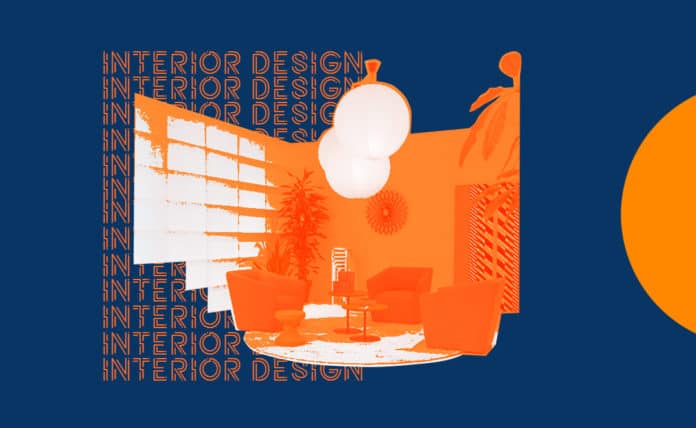
The industry of interior design seems to have been somewhat of a late bloomer when it comes to incorporating technology into its processes. Despite this, the industry has finally caught up and is fully immersed in using technology to enhance the space in which we exist.
When it comes to technologizing the industry, a few recent trends have helped offset the use of digital and scientific measures in design. The movement towards sustainable living has had a profound impact on the materials and methods used to recreate internal spaces. Furthermore, our own living standards have generated high expectations of the constant availability of technology and how and when we use it.
1. Smart Homes
The role of the interior designer has expanded into turning traditional living spaces into high-tech homes. For interior design, there is little that affects our view and perception of a space more than light. 20 years ago, the most control you could have over domestic lighting systems was a rotary dimmer. Today, people can control the lighting situation from their phone, set automated timers on bedroom lights, and even manipulate natural light by insisting the blinds open at certain times.
2. 3D Printing
The use of 3D printing in interior design has not only introduced new methods of creating one-of-a-kind, personalized furniture but has brought with it new and exciting ways of creating inexpensive prototypes quickly.
It allows designers to experiment with new combinations of materials, shapes and structures that would otherwise be difficult with actual size objects that may not be instantly available.
3. Smart Design Tools
Technology has wrapped itself around almost everything we have come to know. The tools once used by interior designers, namely, tape measures, drawing paper, telephone communication methods and level tools have all been highly technologized. Once the interior designer got her hands on them, they became central instruments in the industry.
There once was a time when the only means of communicating with clients, suppliers, and prospects, was by making individual phone calls. Houzz, the online community, provides a digital space for architects, designers and clients to engage and share ideas. Its Site Designer allows professional interior designers to publish their own work on its website. Whilst word of mouth and recommendations are a sure fire way to find clients, this coverage and publication of a designers work is more likely to cast the net far and wide and attract new customers.
To up the excitement, the Houzz 3d AR tool allows people to see and move over 500,000 products from the Houzz Marketplace in their home, before buying. These virtual visual aids have shaken the industry.
4. Sustainable Design
Sustainable development has become the greatest challenge of the 21st Century. There is no exception for the interior design industry. In fact, the industry relies heavily on sustainable development. One of the most important elements used to enhance the interior space in which we live is the air we breathe. It’s no surprise that sustainable design has taken off, and with some help by technology.
Daylight design is well-documented to have health benefits. Before recent technological developments, the strategic placing of windows was the only tool available to the designer of a building. Today, energy-efficient light bulbs burn brighter, use less electricity and last twice as long as a standard light bulb. Further, the introduction of Light Emitting Diodes (LED) have low heat generation, low power requirements and are highly durable. Because their power inputs are minimal, LEDs are readily combined with solar panels to provide energy efficient lighting day and night.
Smart home appliances are also being incorporated into the technological sustainable design process. Kitting out the home with devices that control energy and power to maximize efficiency, is imperative to the future of design. Given the growing awareness of the importance of sustainability, the future housing market is likely to be increasingly interested in investing in smart homes.
Sustainable design projects are influenced by such factors as planning efficient use of space, choosing materials with low environmental impacts and reducing energy consumption, pollution and waste. Further, to accommodate this growing awareness, The use of eco-friendly materials is necessary. The notion of the “green home” has taken form and warrants the need to exchange environmentally damaging materials with eco-friendly resources.
5. Digital Furniture
Interior designers use furniture to establish an aesthetically pleasing and functional sense of order in a room. The changes in the way we interact with technology have changed the way we live, and hence use the space around us.
Sitting on the couch to watch TV, and sitting on the couch to work on a laptop requires two different ways to use that couch. Modern furniture should be created to accommodate technology. That is not to merely suggest that furniture should include charging portals and interactive screens. Technology that is new today, will be replaced and obsolete by next year. Rather, furniture should be created with the new standard of living in mind.
The Scene XXL chair by M2L, for example, comes with the option of an attached “tablet table,” and an upholstered high back for privacy when typing or making phone calls.
From a design perspective, the computer and other mobile devices have gotten rid of so many things that were once used by designers to manipulate the ambiance of a room. Clocks are no longer a necessity because they are on our phone. File cabinets have become antiquated, as have records and in some cases books.
In the past, designers had time to anticipate where tech was going and plan for it. Today, space and furniture have to be constantly aware of it.





 New Episode
New Episode





 Latest IoT News
Latest IoT News








